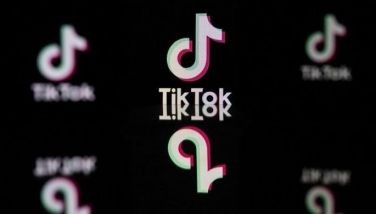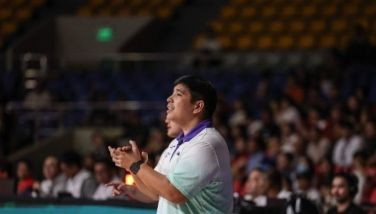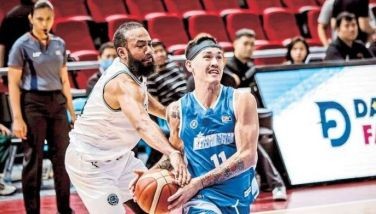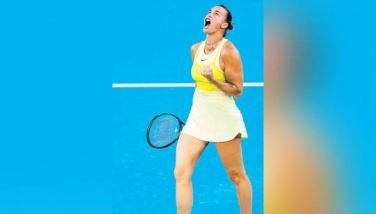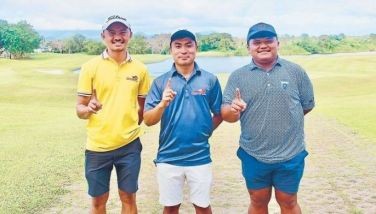Left behind

Health Secretary Ted Herbosa is right to propose harnessing the services of nurses who have yet to pass their board examination. It is a practical solution to the serious problem of staffing government’s hospitals and health centers. These young student nurses will not only gain practical hands-on experience, they will be a big help to the current staff nurses who are overworked because their hospitals or health centers are undermanned and that affects the quality of healthcare provided.
Our healthcare system is in dire need of a radical make-over. It is said that millions of Filipinos living in outlying areas have never seen a doctor. And they probably never will see one because Filipinos who become doctors follow the American dream of becoming specialists with their medical practice in the urban centers.
What we need now are more general practitioners with the heart of the late Dr Juan Flavier who made a career of being a doctor for our rural folks. But because studying to be a doctor is expensive and time consuming, we can understand why they would rather pursue a career that will give them the best economic returns in the shortest possible time.
Medical statistics say that the leading causes of death or mortality in the country is heart disease and cancer. But morbidity is as important if not more so. Simply put, morbidity is the state of being unhealthy for a particular disease or situation, whereas mortality is the number of deaths that occur in a population.
One aggravating factor behind our struggling economic development is the poor health of most of our people… that’s morbidity. The poor cannot deliver their share in growing our economy if they are afflicted with tuberculosis, for example.
There are other tropical diseases that most of our medical graduates may not even care about like parasitism. For example, schistosomiasis remains a public health problem in endemic areas in the Philippines with approximately 12 million people residing in 28 endemic provinces. The patients are mostly poor farmers and there is no glamor or money for a young doctor to specialize in parasitology and tropical medicine unless they are like my late father who did.
So, how does a health secretary who honestly wants to serve as many Filipinos as he can, revolutionize our health care system? By thinking out of the ordinary.
Actually, hiring medical staff who are not yet licensed is not a new idea. An article in the magazine of Harvard’s T.H. Chan School of Public Health talks about “barefoot doctors.”
The article recalled that 50 years ago, during the Cultural Revolution in China, a cadre of “barefoot doctors”– some 1.5 million peasants who received intensive three- to six-month training in anatomy, bacteriology, birth control, maternal and infant care, and other topics – were dispatched to provide basic health care for their rural communities.
“Even in the midst of the revolution’s social upheaval, this low-tech medical corps (named for the fact that many worked in their own rice paddy fields when they weren’t tending to their neighbors) was highly successful, significantly reducing infectious disease and boosting life expectancy.”
As China’s economy improved with Deng Xiaoping’s market reform, the barefoot doctor system came to an end. But the program served as a model and inspiration for the famous 1978 Alma-Ata Declaration on primary health care. This declaration came out of a conference convened by the World Health Organization and UNICEF that is considered a major milestone in the field of public health. It identified primary health care as the key to the attainment of the goal of Health for All.
Harvard Chan’s Chi-Man (Winnie) Yip, professor of the practice of global health policy and economics, believes the Barefoot Doctor program continues to hold lessons for today.
“The barefoot doctor program was a low-cost strategy that achieved high health outcomes. Its core principle was to keep people healthy. And the program reached everybody – it was universal health care in its very core. Just as impressive, barefoot doctors were part of the community, understood the community, cared about the community, and were trusted by the community.”
The mission of our DOH is to build a strong primary care system that provides health promotion, disease prevention, accurate diagnosis, effective treatment, timely referral, and management of all sorts of diseases. Unfortunately, lack of staff is a major bottleneck in building such a system.
The Harvard professor’s idea of a 21st-century barefoot doctor is someone with two to three years of training post–junior high school, who will be enabled with artificial intelligence and big-data-assisted decision support. Apps or web-based tools will use data analytics to prompt the barefoot doctors to ask the right questions, supply the likelihood of various diagnoses, and recommend treatment. It’s an algorithm decision tree, but supported by big-data analysis.
“Twenty-first-century barefoot doctors will be most suitable in areas that are remote and rural and have older people left behind in the global wave of migration to cities. These doctors will need to be respected as the foundation of the health care system. They will also need to earn a decent income – although income alone is not what will keep them in their jobs. If 21st-century barefoot doctors become a reality, it could transform today’s treatment-centric health care systems into systems that keep people healthy – and at scale.”
In other words, the objective is to bring healthcare to our people wherever they are in our country and afford them the benefits of modern medical care through new digital technologies. The “doctor” or “nurse” on the ground just needs to be trained enough to ask the right questions from the patient and get instructions remotely from a specialist in a DOH regional hub.
Of course, the government must still build more tertiary and specialist care hospitals in the regions so people don’t have to go all the way to Metro Manila to get proper health care. But most important, to have general practitioners in regional centers aided by “barefoot doctors” in the countryside.
It can be done. And it should be done to provide our people deprived of healthcare a break.
Boo Chanco’s email address is [email protected]. Follow him on Twitter @boochanco.
- Latest
- Trending















